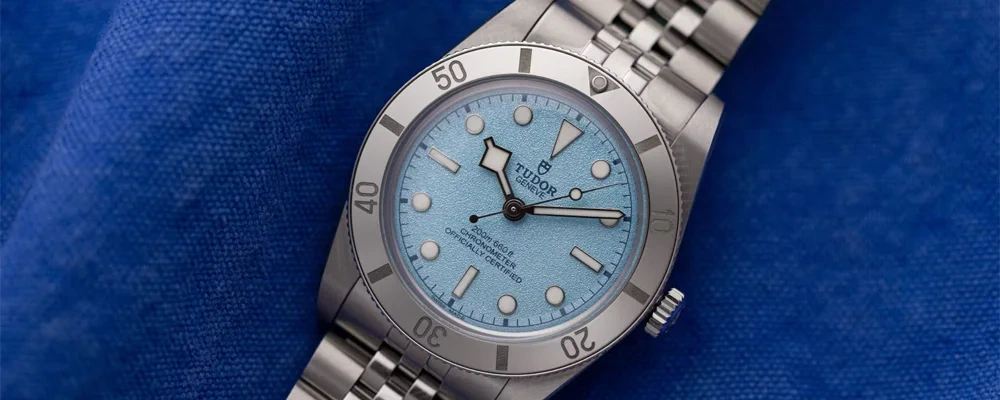Hublot Is Changing Its Ways
Hublot is at a crossroads, and Julien Tornare, the brand’s new CEO, knows it. “Too many new watches and too many limited editions can kill the key launches,” he says. And he’s right. Over the past two decades, Hublot built a reputation on bold designs, wild materials, and relentless hype. But somewhere along the way, the magic started wearing off. Now, Tornare wants to dial things back - not in ambition, but in strategy.
His plan is simple. Less chaos, more good watchmaking. A more refined approach that gives each new release room to breathe. And judging by Hublot’s recent moves, he’s serious.
Source: thehourglass
Slowing Down to Speed Up
Tornare’s first big test came with LVMH Watch Week, where Hublot launched four new versions of the Big Bang. The standout? A 230,000-euro Green Saxem edition (Saxem being short for Sapphire Aluminium oXide rare Earth Mineral). But the real action will happen in April at Watches and Wonders in Geneva. That’s where the heavy hitters will debut - ones that, Tornare hopes, will remind collectors why Hublot was such a game-changer in the first place.
The Big Bang, originally launched in 2005, was the brainchild of marketing legend Jean-Claude Biver. With its oversized 44mm case and unconventional mix of materials - rubber, resin, Kevlar, gold - it gave the then-struggling brand a second life. Now, nearly 20 years later, Tornare wants to bring back that magic, but with a more focused, thoughtful approach.
Source: thehourglass
Hublot Needs a Reset
The problem is not just about making fewer watches - it’s about making better ones. According to Morgan Stanley’s 2024 watch industry report, Hublot’s sales had been sliding, down 10% in 2023. By the end of 2024, that decline had slowed to just 0.8%. Tornare believes that’s a sign the brand has been too scattered, too aggressive with its marketing, and not focused enough on what really matters: watchmaking.
“I will be working more on a three-year type of plan than what has gone before,” Tornare says. That means refining Hublot’s extensive sponsorships in sports, music, and art. It also means doubling down on their partnership with football - a move that once seemed odd but proved to be genius. “We were the first luxury brand to go into the game, which was previously perceived as a mass world with little relevance to luxury goods. But it reaches everyone and crosses all social levels,” he explains.
Source: thehourglass
Bringing Hublotistas Back into the Fold
One of Tornare’s more interesting ideas is reviving the Hublotista community - 200,000-strong and largely neglected in recent years. He wants to bring back exclusive events and experiences for owners, making them feel like part of something special again. He also plans to cap the number of Hublot boutiques at the current 68 locations worldwide. The goal? Keep things exclusive without making them unattainable.
On the pricing side, Tornare is sticking to the plan. The entry-level Hublot will stay around 6,600 euros, but the focus will be on adding value - both real and perceived.
Source: thehourglass
A Look Back at Hublot’s Wild Ride
To understand where Hublot is headed, it helps to know where it came from. The brand was founded in the late 1970s by Carlo Crocco, a member of the Milanese Binda family (the company behind Breil watches). His big idea was a luxury watch with a rubber strap. It was revolutionary at the time, and when Hublot debuted in 1980, it sold 50,000 units in its first five years.
Over the years, Hublot attracted an A-list following: kings, Hollywood stars, artists, and athletes. But by 2004, the brand was struggling. Losses had reached 2 million Swiss francs a year. That’s when Crocco brought in Jean-Claude Biver, giving him a 20% stake and full control of the brand’s direction.
Biver did what he does best - he made Hublot a sensation. The Big Bang became a must-have for collectors, and in 2008, LVMH bought the brand for an estimated 450 million Swiss francs. For the next decade, Hublot could do no wrong, spitting out new models at an insane pace. Carbon fibre, ceramic, King Gold, Magic Gold, sapphire, titanium - you name it, Hublot experimented with it.
But in recent years, that formula has started to feel tired. The endless stream of limited editions, the oversized cases, the loud marketing—it worked for a time, but watch trends have shifted. Collectors today are leaning towards more classic, restrained designs. Even among younger buyers, vintage-inspired pieces are gaining ground over flashy statement watches.
Source: thehourglass
Where Does Hublot Go from Here?
Tornare’s challenge is clear: make Hublot relevant again, without losing the brand’s DNA. It’s a delicate balance. Scale back the chaos, but keep the innovation. Tone down the marketing noise, but keep the energy. Focus on serious watchmaking, but don’t lose the playfulness that made Hublot special in the first place.
That’s the shift Tornare is trying to navigate. The Big Bang put Hublot on the map, but does it still define the brand’s future? Tornare’s job is to make sure it doesn’t become a relic of the past.
For now, the plan is clear: slow things down, refocus on what matters, and remind the world why Hublot is the man in the first place. If Tornare gets it right, Hublot could be on the verge of another Big Bang - but this time, one built to last.
Source: thehourglass
Related Articles
Richard Mille re-releases their signature model in titanium - is it a good choice?

